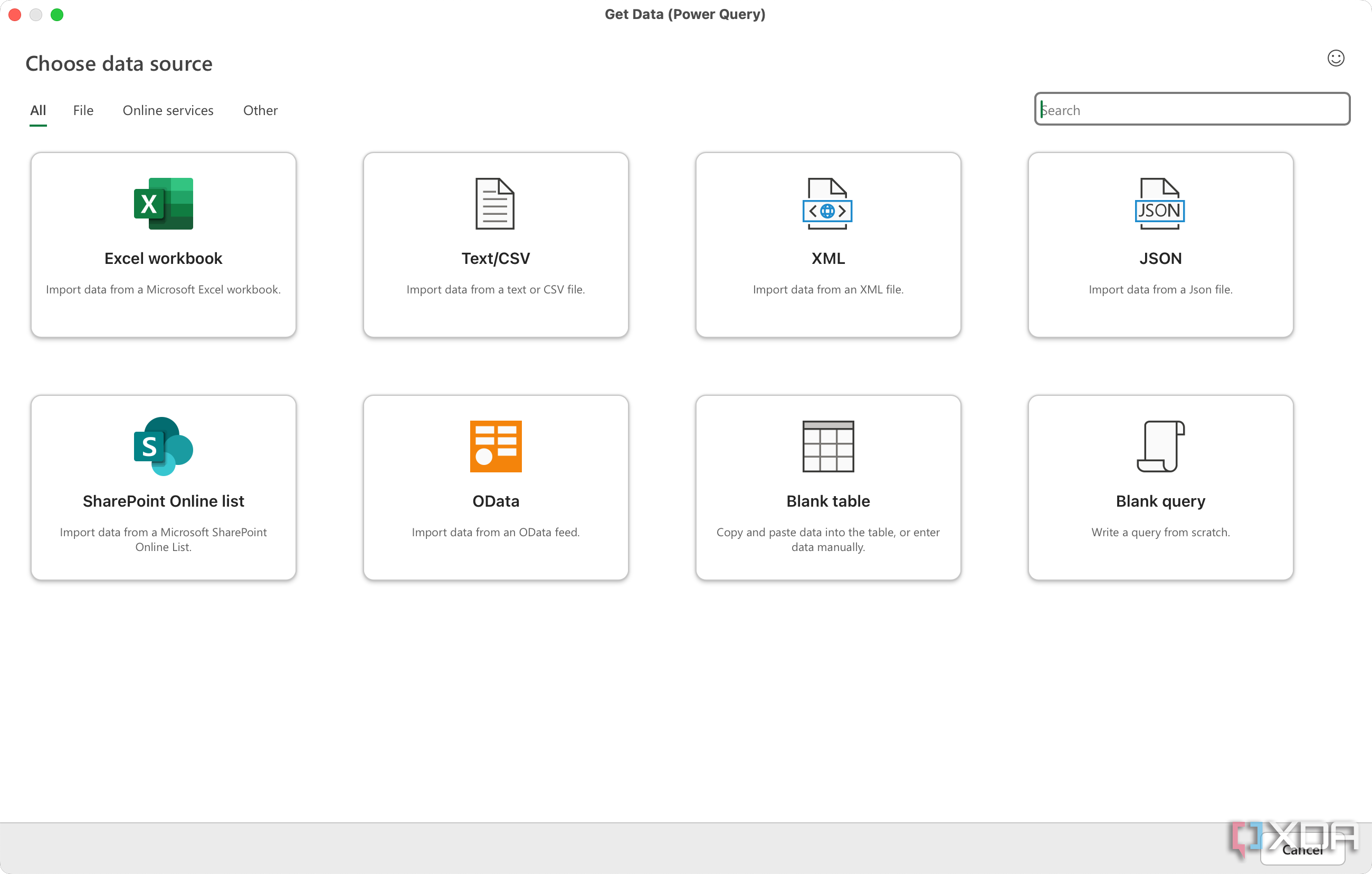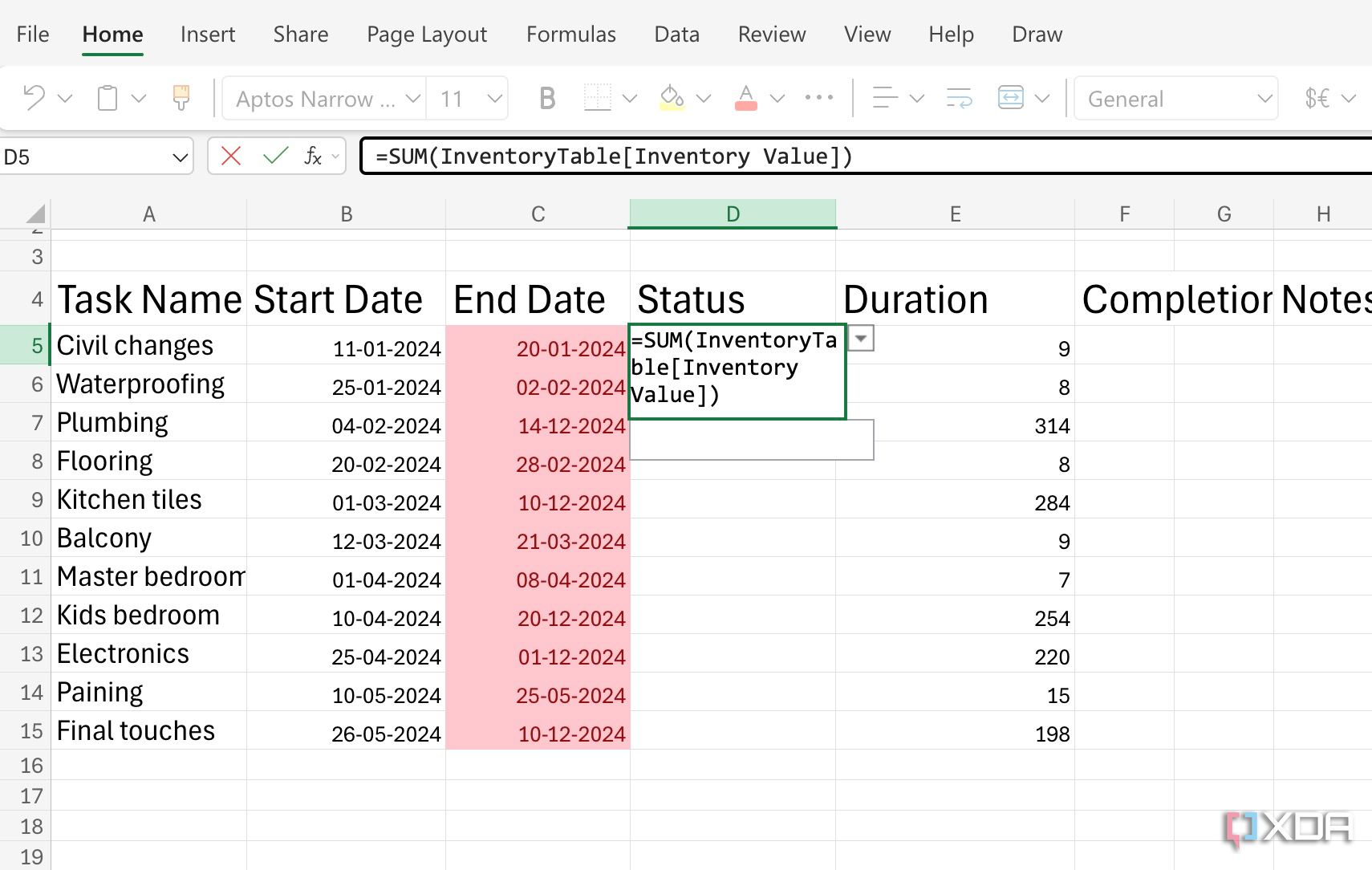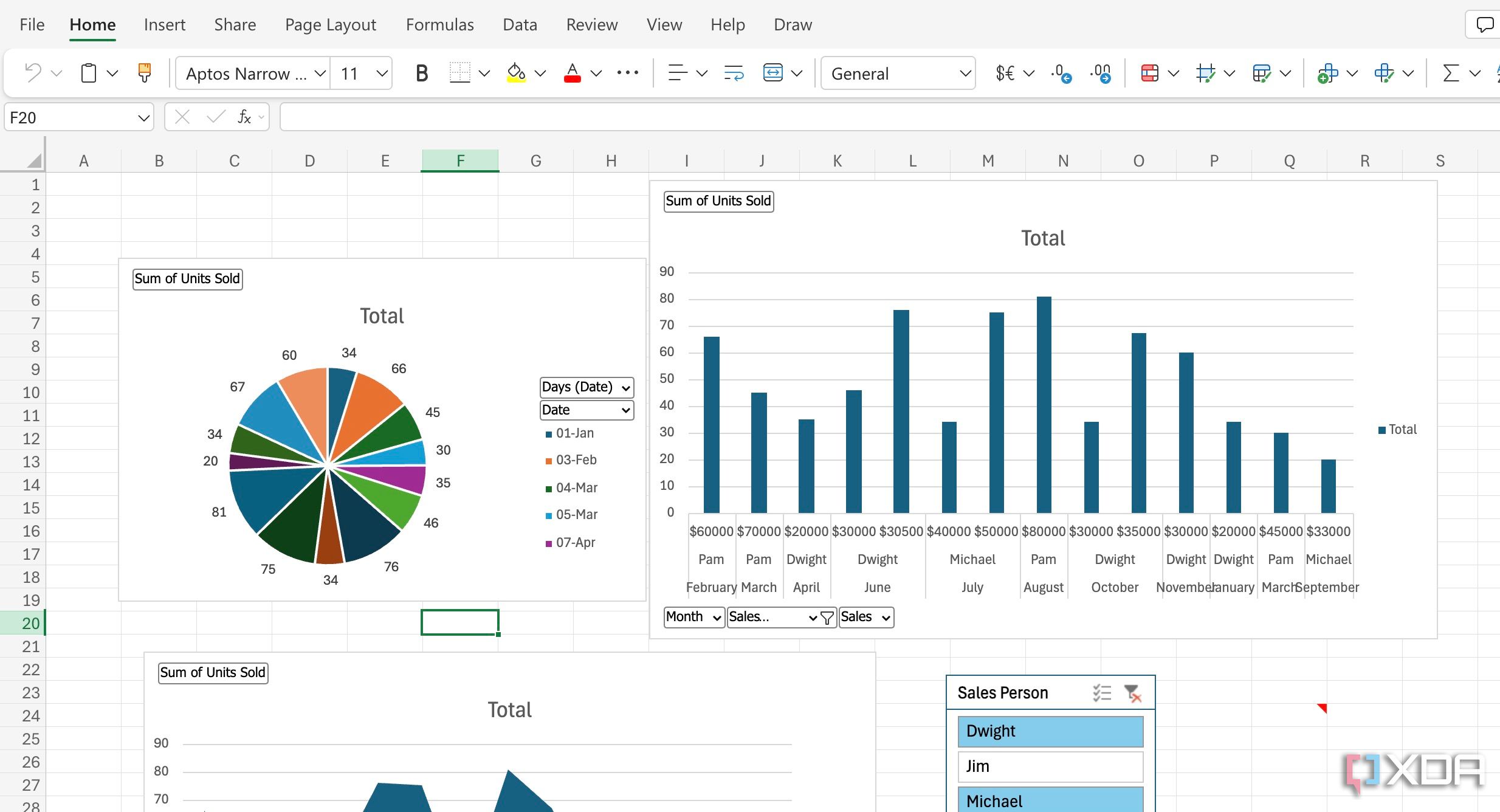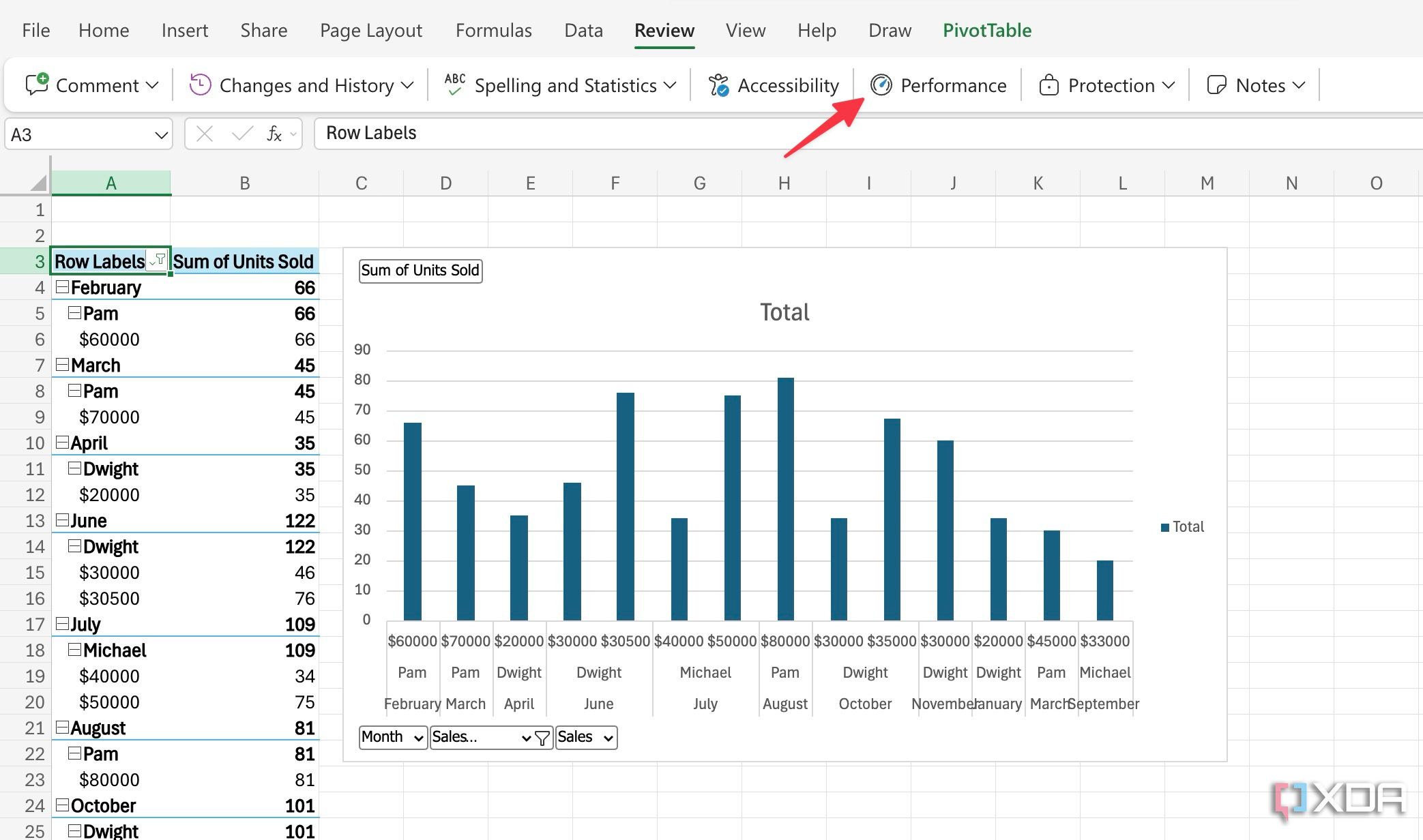Excel dashboards are powerful tools for visualizing data and making informed decisions. But creating a truly effective one can be a challenge. After years of building dashboards for various purposes, I have learned that achieving perfection isn’t about complex formulas or flashy visuals – it’s about applying a core set of features consistently. If you are ready to move beyond basic charts, check out these actionable tips to build the perfect, impactful Excel dashboard every single time.

Related
How to create a project dashboard in Excel with live data
Use live data to create interactive dashboards in Excel with ease
7
Planning and design
Sketch it out for complex dashboards
This phase is absolutely critical. It’s where you define the purpose, scope, and structure of your dashboard and ensure that it meets the needs of your audience and delivers actionable insights. You can ask the following questions before getting started.
- What specific problem are you trying to solve?
- What questions do you need to answer?
- What decisions will this dashboard inform?
For example, are you trying to track sales performance, monitor website traffic, or analyze customer satisfaction? If you are dealing with a complex dashboard, don’t jump straight into Excel. A quick sketch on paper helps visualize the layout and flow. Also, don’t overcrowd the dashboard and make sure to plan for white space as well. You should also place critical information in the top-left corner and organize elements in a logical flow.
6
Use Power Query to manage data
Transform your data like a pro
Power Query is a robust data transformation and preparation engine built into Excel. It allows you to connect to various data sources, clean, transform, and shape data, and load it into Excel for analysis and visualization.
It connects to various data sources like Excel files, databases, web pages, etc, and transforms that data into a usable format. After all, dashboards often pull data from multiple sources, and this is where Power Query becomes essential to eliminate the need for manual copying and pasting, which is error-prone and time-consuming. Overall, Power Query is the foundation upon which effective dashboards are built. It ensures that your data is accurate, consistent, and up-to-date.
5
Use PivotTables and charts
Focus on relevant data only
PivotTables allow you to quickly summarize large datasets and extract meaningful insights with a few clicks. PivotTables and charts play a huge role in my dashboard. I also use Slicers and Timeline to enable interactive filtering.
Let’s say you are a sales analyst for a retail company that sells various products across different regions. You need to create a dashboard to track sales performance and identify areas for improvement. You have a dataset containing sales data, including date of sale, region, product category, product name, quantity sold, and sales revenue.
You can create a PivotTable to summarize sales revenue by region and product category. After that, you can add a slicer for the Date of Sale and Region to filter data with minute details.
Now, it’s time to insert charts. You can insert bar, line, and pie charts to visualize to breakdown sales revenue by region over time. If you are dealing with too many charts, create a new sheet and place everything in an organized layout.
4
Use named cells/ranges
Create a robust data model
Combining Excel tables with named references creates a maintainable data model. Named references enhance formula readability. Suppose you are managing inventory for a small online store. You have a dataset containing product ID, product name, quantity, unit price, and reorder level.
You select your data range, format it as an Excel table and give it a relevant name like InventoryTable. You should create a calculated column called Inventory Value that calculates the total value of each product in stock =InventoryTable[Quantity in Stock] * InventoryTable[Unit Price]. This is much more readable than =C2*D2.
You create a named reference called “TotalInventoryValue” that calculates the total inventory value: =SUM(InventoryTable[Inventory Value]).
Such an approach offers better readability and maintainability and reduces errors.
3
Limit VBA and macro use
Don’t go overboard with it
VBA code can sometimes slow down Excel, especially when dealing with large datasets or complex calculations. In most cases, Excel’s native features and Power Query are often more efficient for data manipulation and analysis. VBA macros also pose security risks if they are not properly vetted.

Related
How to bring your Excel data to life with dynamic visualizations
Captivate your audience with dynamic Excel charts
2
Utilize LAMBDA and LET functions
Create custom functions
LAMBDA allows you to create custom, reusable functions within Excel formulas. You can define a formula, give it a name, and use it as any other Excel function. LET offers the ability to assign names to intermediate calculations within a formula. It improves readability.
Suppose you are building a project management dashboard to track the progress of various projects. You have data on project name, start date, end date, and task completion percentage. You want to calculate the project’s progress, remaining days, and overall project status.
Instead of writing a complex formula, you can use LET to break down the calculation.
Now, you can create a LAMBDA function (ProjectProgress) to reuse this project progress calculation for any project. The possibilities are endless with this duo.
1
Use the Check Performance feature
Clean up your workbook
If you are dealing with a sluggish and glitchy dashboard, utilize the built-in performance feature. It is a valuable tool for optimizing your workbooks, especially dashboards. It scans your workbook and resolves areas like excessive formatting, unnecessary calculations, large ranges with unused cells, and volatile formulas.
After all, dashboards often contain complex formulas, charts, and large datasets and optimizing performance ensures that the dashboard loads quickly and calculations are performed efficiently.
From data to decisions
Creating effective Excel dashboards is a blend of art and science. By focusing on clear planning, mastering Excel’s powerful features, and following the above-mentioned practices, you can transform raw data into actionable insights. What are you waiting for? Whether you are tracking sales, monitoring business performance, or analyzing trends, these tips should help you create dashboards that deliver meaningful results.
Meanwhile, check out our dedicated post if you want to give your Excel dashboard an aesthetic touch.


















